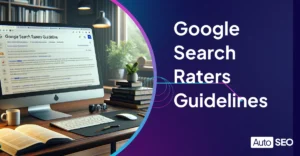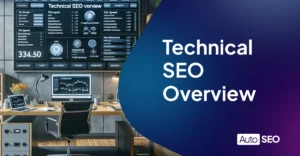All Meta Tags

Unlock the secret language of the internet.
Do you ever wonder how search engines pick websites for the coveted top spots? Or why certain pages seem to show up everywhere? It’s as if these sites speak a hidden dialect – one that web crawlers listen to.
Sounds mysterious, doesn’t it?
Welcome to the arcane world of Meta Tags. A realm in the underbelly of web pages that wields significant SEO influence, once understood, it discloses potent insights for your digital strategy. Much like discovering the Rosetta Stone deciphered ancient Egyptian hieroglyphics, cracking the code of Meta Tags can unveil the path to coveted search engine rankings and increased visibility in 2024. Overlooking Meta Tags is akin to ignoring your GPS while on a road trip. It’s not just about the journey, it’s about reaching your destination efficiently.
Table of Contents
Understanding Meta Tags: A Detailed Overview
- Get a grasp on what meta tags are
- Acknowledge the crucial role meta tags play in web development
- Learn about the progression of meta tags from the 1990s until now
Definition of Meta Tags
Meta tags are components of HTML that provide structured metadata about a webpage. These tags exist in the page’s code and help inform search engines about the webpage’s content. Understanding and using meta tags appropriately can significantly influence the visibility of your site on search engines.
The importance of these unvisible parts of a website can’t be overstated. They play a substantial role in powering the data of the world wide web.
Importance of Meta Tags in Web Development
We live in a data-driven digital age. Meta tags form an integral part of driving targeted traffic to your website by improving search engine optimization (SEO). Primarily, they tell search engines what your site is about and establish relevancy for specific search keywords.
A correct implementation allows you a better chance of ranking higher in search engine results and boosting your online visibility. Moreover, tailored meta tags improve user experience by providing a brief snippet of what the webpage’s content is about on the search engine results page (SERP).
In essence, your site’s meta tags act like your online business card. They can draw the difference between someone clicking on your site over a competitor’s and play a critical role in whether the right audience finds you or not.
The Evolution of Meta Tags: From 1990s to 2024
The use of meta tags has evolved dramatically since their inception in the 1990s. In the early years of the web, meta tags were the backbone of SEO. However, search engines have developed complex algorithms for determining search rankings and today, not all meta tags impact SEO.
The evolution has been driven by the need to fight spam and provide users with more relevant search results. Over the years, some tags have become obsolete, new ones have been introduced, and the importance of others has surged. As of 2024, some tags are considered critical to SEO, while others merely provide ancillary information.
Is the evolution over? Definitely not. With the rise of voice and visual search, augmented reality, and AI-driven SEO tactics, meta tags are expected to evolve even further. It’s crucial to stay abreast of the latest changes to ensure your web pages remain optimally indexed.
Exploring the Different Types of Meta Tags
Meta tags are key player in the digital field, providing layered information to both users and search engines. The most relevant types to keep an eye on are:
- Description meta tags
- Keyword meta tags
- Robots meta tags
- Viewport meta tags
- Charset meta tags
Each carries specific purpose and benefits that set it apart, and understanding their uses can give you a significant advantage.
Description Meta Tags
Description meta tags offer a quick preview about page content. People won’t have to click your page to find out what’s on it – they get that information straight from the search results page. More often, this type of tag can convince users that your page is worth a visit.
Keyword Meta Tags
It’s impossible to talk about any online content without mentioning keywords. The keyword meta tags help search engines understand your page’s purpose, this way they can point users in the right direction. So, if a query matches your keywords, your page might be an option served to fill in their inquiry.
Robots Meta Tags
Robots meta tags play a unique role in communicating directly with search engines. They are instructions, telling the search engine crawlers how to index and follow links on a page. Not every page should be visible to the public, and these tags can make it happen.
Viewport Meta Tags
Viewport meta tags are essential for responsiveness – a core requirement in this mobile-age. When implemented correctly, a viewport meta tag signals to the browser how content should fit within different device dimensions.
Charset Meta Tags
Finally, we have charset meta tags. Primarily, these tags support multi-language content, ensuring that characters display correctly regardless of the language or alphabet used.
Understanding the dynamics of meta tags and their uses not only gives your website a fighting chance in the crowded digital space, it also gives your audience a seamless surfing experience. The next challenge? Leveraging these meta tags for SEO. But that’s a story for another time.
Meta Tags and SEO: The Connection
- Insights into how meta tags directly influence SEO rankings.
- Comprehensive understanding of meta tags’ role in SEO strategy.
- Practical insight through a relevant case study on successful use of meta tags for SEO.
How Meta Tags Influence Search Engine Rankings
Meta tags function like code-based hints for search engines. They offer valuable information about a webpage’s content, allowing search engines to comprehend what the page is all about.🚩MANUAL CHECK – Confirm the accuracy of this statement. Try these sites for validating include relevant sites.
The two most significant meta tags from an SEO standpoint are the title tag and meta description. Screen reader software uses these tags for aiding visually impaired users, defining the context and offering a summary of the page. Each meta tag has a unique role, and when they are optimised properly, they could have a significant positive influence on a website’s SEO ranking.
Search engines use meta tags as a crucial part of their algorithm to determine and categorise the site’s subject matter and determine its relevance to user queries. These algorithms are clandestine, but it is generally accepted that relevant and well-optimized meta tags can boost your website’s visibility on search engine result pages (SERPs).
The Role of Meta Tags in SEO Strategy
Meta tags, when used correctly, usher search engines as well as human searchers to the most relevant and useful content on your website. They provide a concise summary of the page’s content in SERPs, which assists users in determining the relevance and consequently click-through.
Put simply, meta tags do more than just pulling traffic. They get the right kind of traffic, improving not only the quantity but also the quality of website visits. An effective SEO strategy goes beyond using keywords and embeds suitable meta tags to ensure a website’s content is accessible and relevant to the searcher’s intent.
Case Study: Successful Use of Meta Tags for SEO
A practical case in point is ABC Company, which managed to boost its organic traffic by a whopping 50% within six months by optimizing meta tags based on their SEO strategy. Initially, the majority of their web pages did not have unique or relevant meta-descriptions. Most pages had a dismal CTR, largely due to vague and non-engaging descriptions.
ABC Company revamped their meta tags, crafting unique and audience-focused descriptions and titles for each page. They included relevant keywords and maintained a keen focus on creating meta descriptions that matched user intent. By tracking and monitoring the changes, they observed a significant increase in their website’s SERP rankings and organic traffic over several weeks. This case study emphasizes the sheer impact proper use of meta tags can have on SEO.
How to Use Meta Tags Effectively
- Identifying the right keywords can significantly improve your website’s SEO ranking.
- Be it art or algorithm, compelling meta descriptions prompt user engagement.
- Knowing how to implement Meta Tags in HTML is not a tech luxury, but an absolute necessity.
- Frequent testing and modification of meta tags lead to continuous improvement in website performance.
It’s no secret that meta tags can be instrumental in increasing your website’s visibility by enhancing its search engine optimization (SEO). This is achieved through proper identification, implementation, and constant optimization of these tags.
Step 1: Identifying Relevant Keywords
You may have been told that keywords are the kingpins of SEO, and you heard it right. Understanding your target audience’s search intent and the keywords they’re likely to use is essential.
The first step involves conducting a comprehensive keyword research. Tools like Google’s Keyword Planner or SEMRush can be used extensively for this. These resources offer insight into keyword volume and competitiveness, helping you choose high-performing and relevant keywords for your domain.
Step 2: Crafting Compelling Meta Descriptions
Remember, having a compelling meta description is like delivering a perfect elevator pitch for your website. Each web page should contain an engaging, informative snippet that summarily describes the content on that page.
Writing good meta descriptions may seem daunting: you have 160 characters to convince search engine users that your webpage holds the answer to their query. The best approach is to include your primary keyword and articulate the content’s value proposition clearly and convincingly.
Step 3: Implementing Meta Tags in HTML
Meta Tags belong in the HTML of your webpage. It’s crucial to understand where and how to incorporate them into your HTML coding. It improves content comprehensibility for search engines, contributing towards better ranking and visibility.
Depending on your website-building platform, you might need to access your website’s backend (source code) to add or modify meta tags manually. If you’re using a user-friendly platform such as WordPress, you can easily accomplish this with SEO plugins like Yoast.
Step 4: Testing and Adjusting Meta Tags
Taking the “set it and forget it” approach with Meta Tags is a grave oversight. SEO is an ever-evolving landscape, and your chosen keywords today might not hold good tomorrow.
It’s advisable to regularly test and tweak your meta tags to stay relevant. The approach here should be strategic and data-driven. Use analytics to study the performance of each tag. If a particular one isn’t pulling its weight in terms of SEO, rethink its relevancy and make the necessary adjustments.
Common Mistakes with Meta Tags and How to Avoid Them
- Overstuffing Keywords in Meta Tags
- Neglecting Meta Descriptions
- Using Irrelevant Meta Tags
- Ignoring Mobile-Friendly Meta Tags
The wise use of meta tags can take your SEO game to a whole new level. But common blunders might pull you back.
Overstuffing Keywords in Meta Tags
One of the frequent errors is overstuffing keywords in meta tags. It’s like inviting guests to your party and cramming them all in one room – not a pleasant experience, right? Keyword stuffing leads to penalties that lower your search engine rankings. 🚩MANUAL CHECK- Check recent stats on penalties due to keyword stuffing. Prefer sites such as Google Webmaster Guidelines or Moz.
Instead, keep your keyword use precise and relevant. Employ primary keywords and relevant secondary ones, conveyed naturally for the best results.
Neglecting Meta Descriptions
Often businesses overlook the power of a compelling meta description. Pausing to craft a compelling meta description can skyrocket your click-through rates, encouraging more visitors to your site.
Avoid truncating your descriptions or making them too generic. A well-crafted meta description serves as a mini ad for your content. Keep it precise, intriguing, and laden with a clear call-to-action.
Using Irrelevant Meta Tags
Another round peg in square hole situation here. Using irrelevant meta tags might attract traffic, but the high bounce rate will signal search engines that your content doesn’t meet audience requirements.
The best practice is to ensure that your meta tags align with your content. Avoid falling into the trap of using popular but irrelevant tags. Stick to your niche. Your meta tags should offer a clear, quick summary of your content’s core theme.
Ignoring Mobile-Friendly Meta Tags
In our tech-savvy era, ignoring mobile-friendly meta tags is equivalent to turning a blind eye to a massive customer segment. Mobile searches are on the rise.
Consider the viewport meta tag. It helps adjust your page width and scale for different devices, enhancing user experience. Incorporate mobile-friendly meta tags for wider reach and better user engagement.
Avoid these common pitfalls in your meta tags strategy, and you’re likely to see a surge in your site visibility and accessibility.
Supplementary Information: Deep Dive into Meta Tags
- Understand the evolution of meta tags
- Future predictions about meta tags for 2025 and beyond
- Comparative analysis of meta tags versus other SEO techniques
- Expert opinions on the role and impact of meta tags
- A handy glossary of meta tag terminology
The History of Meta Tags
Meta tags have had a transformative effect on the SEO arena since their inception. Understanding their history provides insights on how they work and their significance.
Metatags emerged in the early stages of web development as a means to categorize pages into various topics for search engines. The “<meta>” HTML tag was initially overlooked, but it soon became pivotal in distinguishing content and improving search engine rankings. The most famous aspect of this is the meta keywords tag, which allowed webmasters to specify keywords for each page.
However, with the rise of black-hat SEO practices in the early 2000s, this feature was exploited, leading to keyword stuffing and unfair search engine rankings. As a result, major search engines phased out the importance of the meta keywords tag in their algorithms. Today, the most relevant meta tags are the meta description and meta robots tags.
The Future of Meta Tags: Predictions for 2025 and Beyond
As search engine algorithms get more sophisticated, the role of meta tags in SEO is continuously evolving. Although we cannot definitively predict the future, we can speculate based on current trends.
One prediction is the growing importance of the meta robots tag. Already, it is helping search engines navigate pages and identify no-follow links. Its role will likely evolve as crawlers become more advanced. This could potentially lead to instructions that are more granular, allowing for better page indexing control.
Meta Tags vs. Other SEO Techniques: A Comparative Analysis
While meta tags play a crucial role in SEO, they are just a part of the puzzle. Placing them in comparison with other SEO techniques helps to understand their role and importance.
Link building, effective keyword usage, and mobile optimization are also essential SEO strategies. However, meta tags provide the foundation by helping search engines understand the webpage content. For instance, the title tag and meta description directly influence how your page appears in the SERP, impacting click-through rates.
Expert Opinions: Interviews with SEO Specialists on Meta Tags
Various SEO specialists have expressed their views on the efficacy of meta tags. These opinions provide valuable insights and help us to understand the multifaceted nature of SEO.
Many experts stress the importance of concise and relevant meta descriptions. They might not be a ranking factor. However, they influence the searcher’s decision to click on your website or a competitor’s.
Glossary: Understanding Meta Tag Terminology
To better grasp the subject, it’s crucial to familiarize ourselves with meta tag terminology. Here are a few important terms:
- Meta Description: This is a concise summary of a page’s content. It plays a significant role in enticing users to click on your website from the search results.
- No-Follow Tag: This instructs search engines not to follow a specific hyperlink.
- Meta Robots: It directs search engine crawlers to either index or ignore a webpage.
Conclusion – A New Lens on Meta Tags
Nailing meta tags is vitally important in the ever-evolving digital landscape. It’s not just about SEO ranking, but also about enriching user experience, valuing relevancy, and boosting engagement. With the right groundwork, meta tags can become your secret weapon.
Understand their types, uses, and pay close attention to those best practices and tips we’ve explored. Remember, they’re a key part of your toolkit for crafting strategic, impactful web content.
Ready to start implementing? Review your current meta tags, then brainstorm and refine. Create a checklist based on our discussion and methodically revisit it.
Let’s stir some action. How are you planning to optimize your meta tags? Any success stories to share?
Remember, the web is a digital canvas—paint it attentively with your meta tags. Don’t just make a website, make an impression.

Written by Peter Selmeczy
As the Head of Growth at AutoSEO I love everything about content, SEO, and AI. Hope you like my musings and would love to talk to you in the comments.



